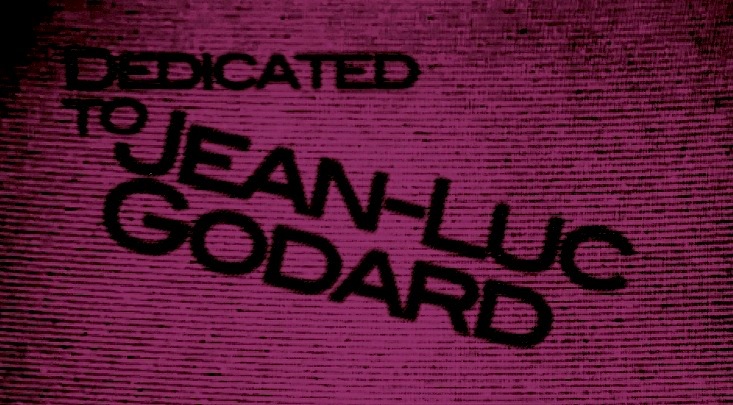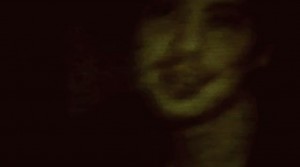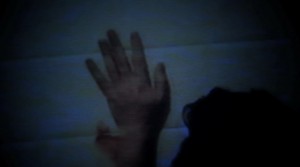Queering the French New Wave, Embracing the Cardinal Virtues
SPRING 2012, ISSUE 2
–Benjamin Barbour
If you try hard enough, you might remember him. He was that kid we all went to school with: the awkward one, always dressed in black. You might’ve caught him quoting Vincent Price or chasing after his friends with that crappy VHS camera his father gave him. He’s the one that collected all those Jurassic Park toys and carried that Beetlejuice lunchbox.
As memories come to me in shades of gray, it’s easy to forget that I once was that kid. I never had a choice in the matter. From the moment I pressed play, I was possessed by a fascination with the movies. My parents, however, never understood my desire to pursue a career in filmmaking. As much as they may have tried to dissuade me, they surrendered to the idea with time. But even today, they ask me: why horror?
As a young fan of monster movies and slasher films, questions of representation, spectatorship, and stereotype couldn’t have been further from my mind. In fact, I found it altogether impossible to rationalize what was, to me, a very natural inclination toward the strange and unusual. To defend my chosen genre was, in essence, to admit its shortcomings. But in those days, the films themselves guided my passion. And my dedication was sealed with an undisputed pledge to follow in the footsteps of my heroes: Alfred Hitchcock, Dario Argento, and Mario Bava.
Years of study, however, have given me a new outlook on the horror film. And life experience brings a more personal touch to my work. I believe that unseen electrical wires connect the past and the present, allowing for a ghostly interchange between the two. The craft of filmmaking allows me to reveal this tender (and often excruciating) dialogue between what was and what is. Most noticeable in my work is a preoccupation with just this sort of dialogue, a preoccupation with the past, with ghosts, and with an overall inability to cope with loss. My characters are often troubled, transient, or in search of answers. They are generally unsatisfied or at a crossroads in life. Meanwhile, their ghosts represent things forgotten, things that long to be unearthed (Freud would call it “the return of the repressed”).
As I evaluate my work, the answer to my parents’ question seems all the more obvious. In retrospect, I believe that my preoccupation with “otherness” was the driving force behind my lifelong obsession with horror. Of course, some film theorists suggest that American viewers are united in a shared obsession with visual pleasure. But even at an early age, I knew I was different. For me, displeasure was key to enjoyment. And while I knew – perhaps, instinctually – that the cinema was the model for American life, I was often left to wonder: where did I go wrong? Growing up in a small, conservative community was difficult. The glaring differences between real-life and reel-life seemed, at once, both obvious and intangible. To me, Hickory, North Carolina, was a far cry from the America I found on cable television. Life in the Deep South wasn’t as colorful or exciting. And this duplicity taught me to be uncomfortable in my own skin and to disavow my homosexuality. As I traversed a twisted path toward “authenticity,” the masks I wore often left me blind at the wheel. Now, of course, I know that many gay men (and likewise, many women, lesbians, and other minorities) can speak to this concept of simultaneous presence and absence on the silver screen. I might go so far as to call it “a ghostliness of being” or an emotional abstraction. But in any case, I identified horror cinema as an-Other kind of cinema. It may be difficult for some to understand the amount of denial involved in such a blind romance with horror. But as issues of misogyny, homophobia, and racism came to my attention, I began to feel as though the genre had betrayed me. Horror had, in some bizarre way, tricked me. It had become a veritable “Terrible Place,” offering only an illusory respite from the falsities of Hollywood.1
Now in the dual degree program (M.F.A. in Film and Television and M.A. in Cinema Studies) at the Savannah College of Art & Design, my approach to filmmaking (and criticism) has changed significantly. Author Laura Mulvey’s “Visual Pleasure and Narrative Cinema” has impacted me greatly, as her discussions of Hitchcock’s sadistic male gaze illuminate my chosen object, the horror film. In this regard, Modernism and European Art-House were also essential to my development as a filmmaker. But The French New Wave was undoubtedly my greatest influence. The works of Jean-Luc Godard, Agnès Varda, and Alain Resnais gave me a new appreciation for film deconstruction. These directors are well known for their unique approach to filmmaking, their radical experiments with editing, and their overt visual style. Embracing a striking counter narrative, their modernist efforts expose many of Hollywood’s cleverly concealed constructs. Still, the classic tropes appraised in their films are treated with both affection and admiration. Though these directors did not work in the horror genre, they nevertheless managed to teach me the necessity of criticism. And they pushed me to confront issues of representation and stereotype with a new kind of horror narrative.
My most recent film, Have Not, is unavoidably a mixed bag of emotions. Foremost, it is a personal film intended to express both nostalgia for the horror genre and a discontent with its many formulas. Reveling in Brechtian alienation, the film illustrates the homosexual’s cinematic disavowal, his shame, and his inability to prosper in a world that violently rejects him. The recent passing of Amendment One in my home state of North Carolina reinforces a sad truth: the American Dream is not often afforded to the gay community. As film and media theory suggests, advertisements encourage us to buy stock in a very American brand of happiness. So, when Professor Lubomir Kocka asked me to create a narrative film incorporating an advertisement, I decided that my film should serve as a sort of video-essay on the subject. And immediately, I conceived of a counter horror film that would comment upon the homosexual’s inability to attain the American Dream and the role of commercialism in that conflict. Beyond this, Have Not is an experiment in form, consistently drawing upon French New Wave technique as it complicates and confounds genre convention.
In terms of its narrative, Have Not is fairly simple. The film follows a man named Gus who, after the passing of his boyfriend Ben, must take to a life on the streets. Haunted by the loss of his boyfriend, Gus spends his days aimlessly searching for a place to lay his head. As an ill-omened thunderstorm approaches, Gus takes refuge in a condemned house outside town. Of course, he is happy to have a roof over his head, but something seems very odd about the place. Once owned by a hoarder, the place is packed to the brim with useless junk. Curious, Gus tours the house’s many rooms, discovering photo albums filled with smiling faces from decades past. These images bring about in Gus a bitter nostalgia as he recalls both good and bad times with Ben. Over time, however, his vivid memories begin to manifest physically, materializing almost supernaturally. And in the end, he must come to terms with that which he once had but tragically lost: the love of his life.
In the case of Have Not, theory and technique are inseparable, for the film is much more than a mere haunted house story. After familiarizing myself with queer and feminist theory, I began to question my own choices as a filmmaker. Now enlightened to the transgressions of the horror genre– recalling the queer’s “ghostliness of being” – I aimed to make informed decisions, both narratively and stylistically. In short, I learned that he who controls the media, controls the message. And I hoped to handle that power with care. Though the French New Wave has from time to time fallen prey to its own brand of misogyny and homophobia, I feel that its overt style places an emphasis on ethical directorial choices. Typically, the so-called “Seven Cardinal Virtues” of the French New Wave have been attributed to Godard, but they are relevant to the work of Agnès Varda, Alain Resnais, and many other directors as well. Their films often contrast the “Seven Deadly Sins” of classic Hollywood cinema with their more virtuous counterparts.2 In this way, the French New Wave favors narrative intransitivity (over transitivity), character estrangement or estrangement (over identification), a foregrounding of film technique (over technical and stylistic transparency), multiple diegesis (over single diegesis), aperture or open-ended-ness (over closure), audience displeasure or discomfort (over visual pleasure or “suture”) and relative “reality” (over deceptively constructed fiction).
For the sake of my own film project, I decided to employ these techniques thoughtfully, paying close attention to representation and stereotype. Following Godard, I would use portable equipment, presenting Have Not as a documentary-style film. I would toy with horror convention by employing discontinuous editing, long takes and jump cuts. And I would emulate The French New Wave’s open-ended, fragmented narrative style. In this regard, Agnès Varda’s Cleo from 5 to 7 was particularly influential. Much like Varda’s film, Have Not embraces narrative intransitivity. Following one character over the course of a day, Have Not allows the narrative to unfold organically. The film begins with Gus as he wakes up, and it ends with his ambiguous death. At the same time, the film embraces Brechtian alienation, a common device among The French New Wave. This device allows characters to work as types, to represent values or to criticize social biases. The idea, of course, is to refuse the audience’s pleasurable “suturing” into the narrative, and instead to provoke active contemplation. For this reason, we have Gus (a homeless man, lost in a sea of American bric-a-brac), unable to quench his thirst, traversing the desolate American landscape, a sweat-stained Coca-Cola Tshirt stuck to his back. The image of this social reject becomes a structuring irony for the film, and his character comes to represent the narrowness of the American Dream.
In terms of editing, Alain Resnais’ Last Year at Marienbad is revolutionary in its approach to the flashback. In homage to Resnais, repetition pervades Have Not. In addition to this, memories interrupt its narrative fabric. The context of Gus’s flashbacks, however, remains ambiguous as the viewer is asked to actively interpret the meaning of the film’s images. Ultimately, this subversion of narrative form complicates the viewing experience. The audience must draw their own conclusions and form their own unique hypotheses as to the chronology of events. Of course, the goal with this technique is not to merely provide visual pleasure, but to antagonize the viewer, to critique Hollywood style, and to call attention to the cinema’s unethical manipulations.
Jean-Luc Godard’s recent Film Socialisme also provided inspiration for my film. The director’s use of multiple media and his foregrounding of technique were particularly impressive to me. Taking note of Godard’s shaky camerawork and self-reflexive style, I decided to shoot Gus’s flashbacks on a VHS home-video camera. The present would then be shot on the more modern Canon 7D. Of course, I intended this multi-media approach to work narratively as an impressionistic device. But over the course of the film, VHS footage begins to penetrate the narrative more erratically as a seeming war is waged between the past and the present, between modernism and classic narrative style.
Besides being an intensely personal piece, Have Not seeks to educate and enlighten viewers. Its terrors are not meant to shock, but to unsettle and disrupt. No doubt, I owe a great debt to Laura Mulvey and the directors of the French New Wave who have taught me to look at films more critically. They’ve ignited within me a creative fire and a fuming dissatisfaction with dominant cinema. In the future, I hope to continue the French New Wave tradition of questioning the mechanics of narrative form. But above all, I hope to bring my own perspective to the cinema, to “turn the screw” once more by countering the horror genre and “queering” The French New Wave aesthetic.
Posted May 28, 2012.
1 “The Terrible Place” is theorized by Carol Clover in “Her Body Himself,” which appears in The Dread of Difference, Ed. Barry Keith Grant (Austin: University of Texas Press, 1996).
2 The “seven deadly sins” and “seven cardinal virtues” were originally theorized by Peter Wollen in “Godard and Counter Cinema: Vent D’Est” Film Theory and Criticism, sixth edition. Eds. Leo Braudy and Marshall Cohen (New York: Oxford University Press, 2004) 525-533.
Benjamin Barbour (proudly taking his place in the B.B. lineage, from Bardot and Brecht) graduated in 2008 from the University of North Carolina at Greensboro with B.A. degrees in both English and Film & Television Production. He is currently in the Film/Cinema dual-degree (MFA in Film & Television and MA in Cinema Studies) program at Savannah College of Art and Design. As a film student, Benjamin’s focus lies in directing and editing. As a cinema studies student, he specializes in the study of horror films, particularly the Italian giallo. His graduate thesis film Exposé is currently in production. Ultimately, he would like to work as a professor, critic, theorist, and film director.



